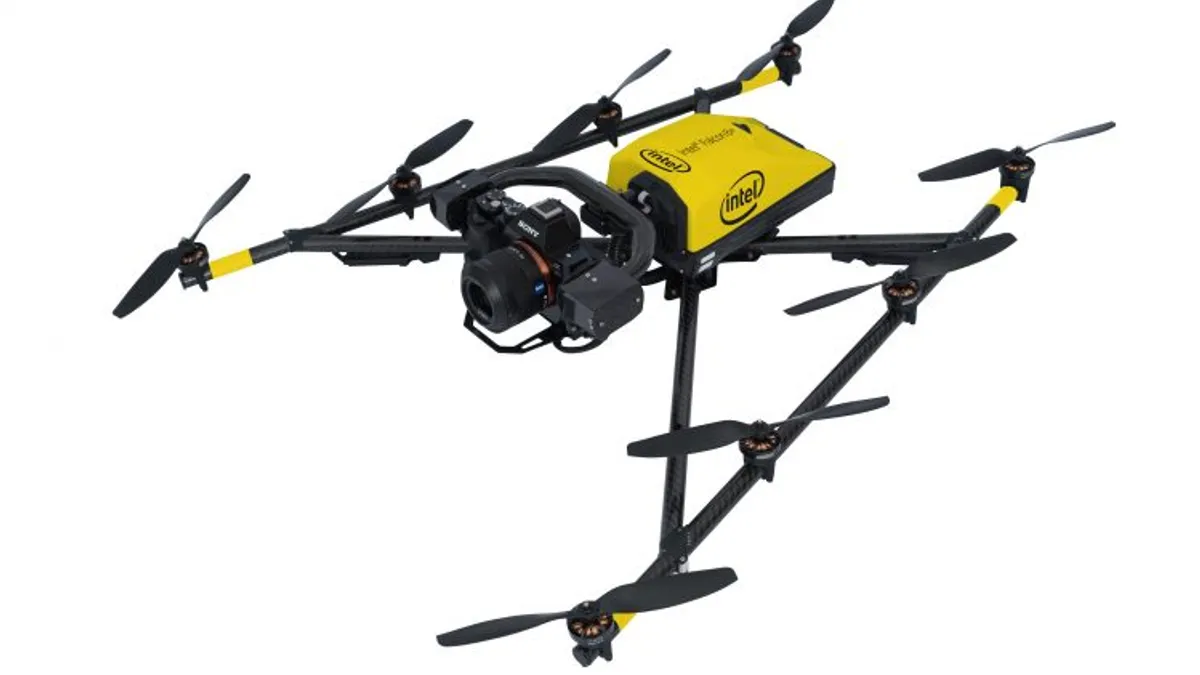Dive Brief:
- Global semiconductor and microchip manufacturing behemoth Intel has entered the commercial drone business with the launch of the firm’s Falcon 8+ unmanned aerial vehicle (UAV).
- Weighing in at 6 pounds, the drone was designed for industrial applications including construction site mapping, surveying and structural inspections at flight speeds of up to 35 miles per hour.
- The Falcon 8+ includes Intel’s depth perception camera used for collision avoidance and is largely based on the AscTec Falcon 8 airframe developed by Ascending Technologies, which Intel acquired in January 2016.
Dive Insight:
Drone companies continue to evolve performance specs and overall airframe construction to match the rigors of industrial and commercial UAV demands. In September, Kespry unveiled its Drone 2.0 with extended flight times and wind performance cited as major pros for AEC drone pilots.
Intel's move to enter the game signifies that established technology manufacturers recognize the market potential for drone deployment, pegged at $127 billion by PwC, with infrastructure and construction representing the largest global drone market, accounting for $45.2 billion of the total.
Construction sites are fair game for drone flights under the FAA’s loosened guidelines for commercial drone use, which prohibit flights over people unless they are directly involved in the project. That’s not keeping makers like Intel from including safety enhancements for busy job sites. For example, the depth perception camera on the Falcon 8+ is intended to help prevent collisions.
Before the new rules were released, drones were already flying over many construction sites on the sly, but the FAA’s regulation largely opened up the industry to drone flights for surveying, project management and analysis, safety monitoring and inspection, and even materials transfer.













